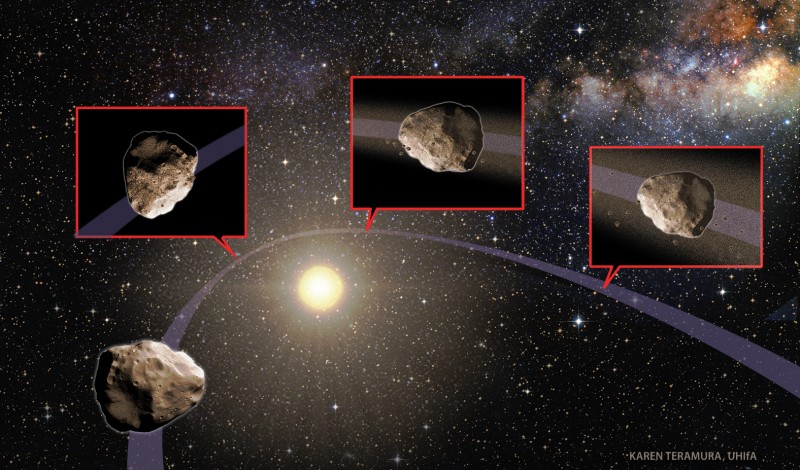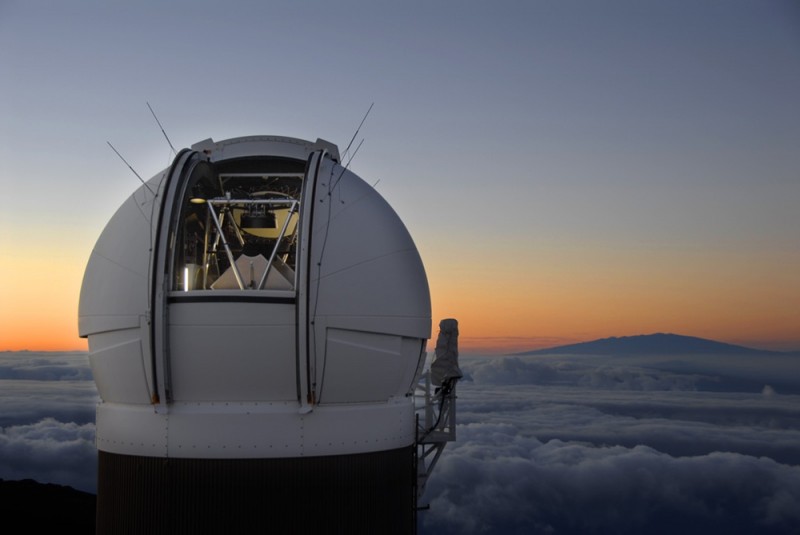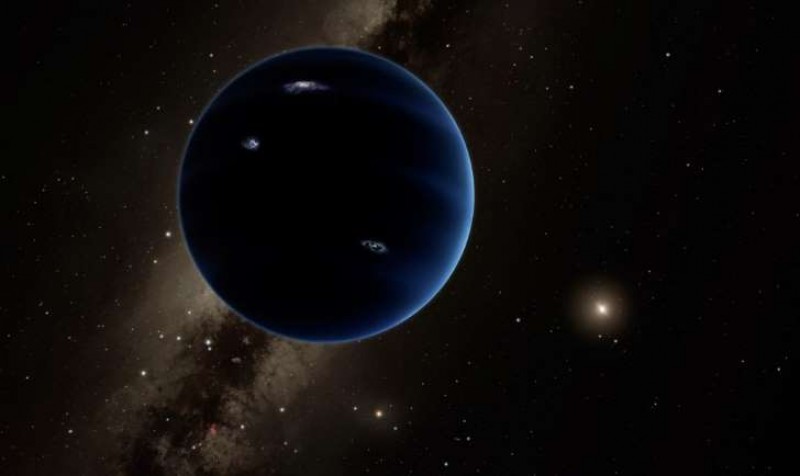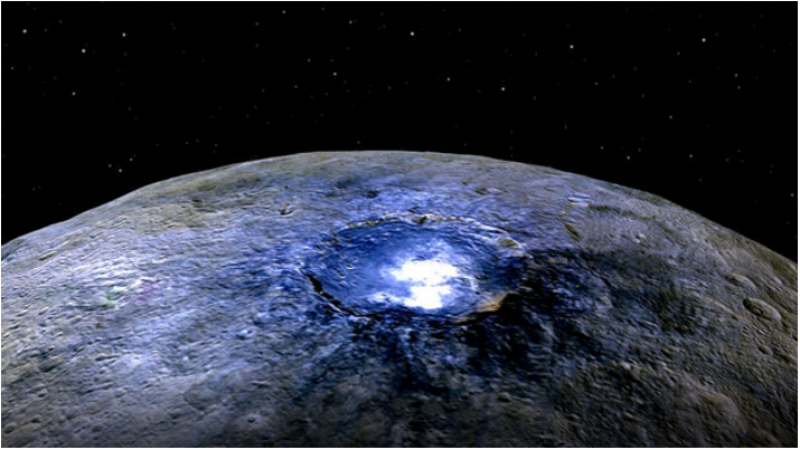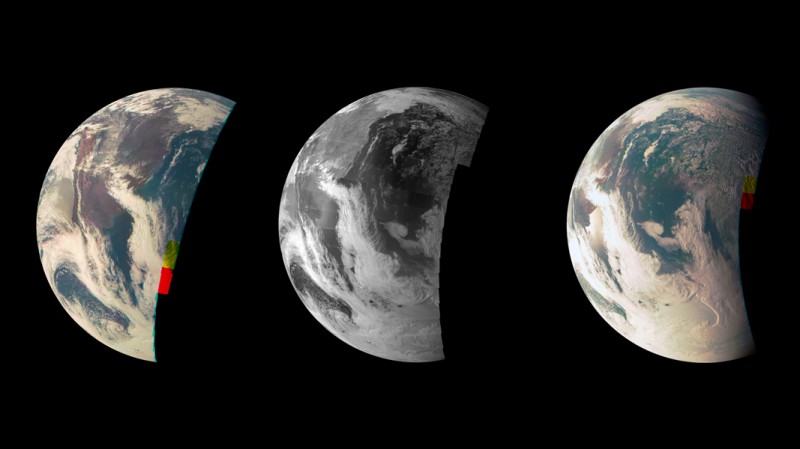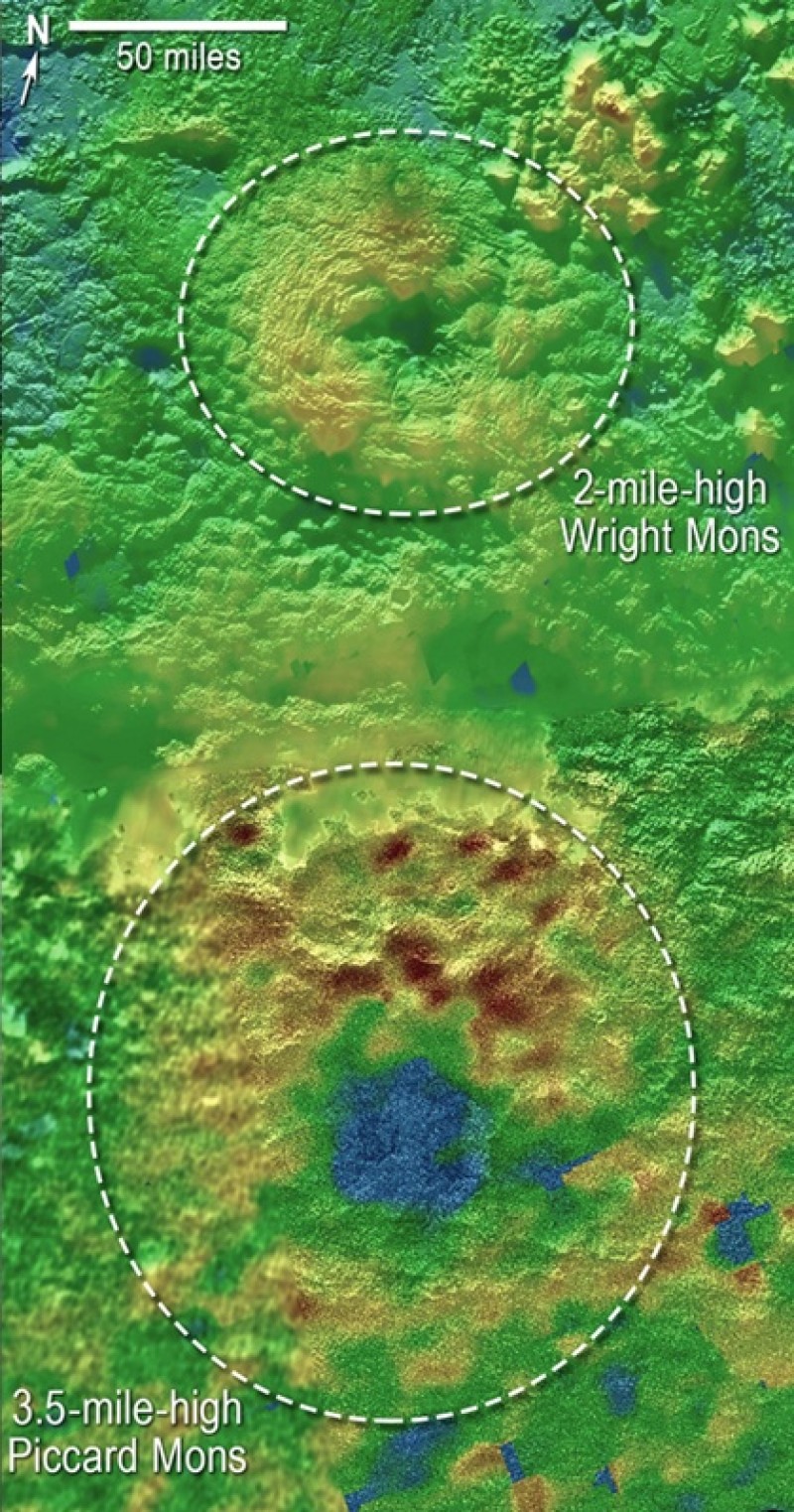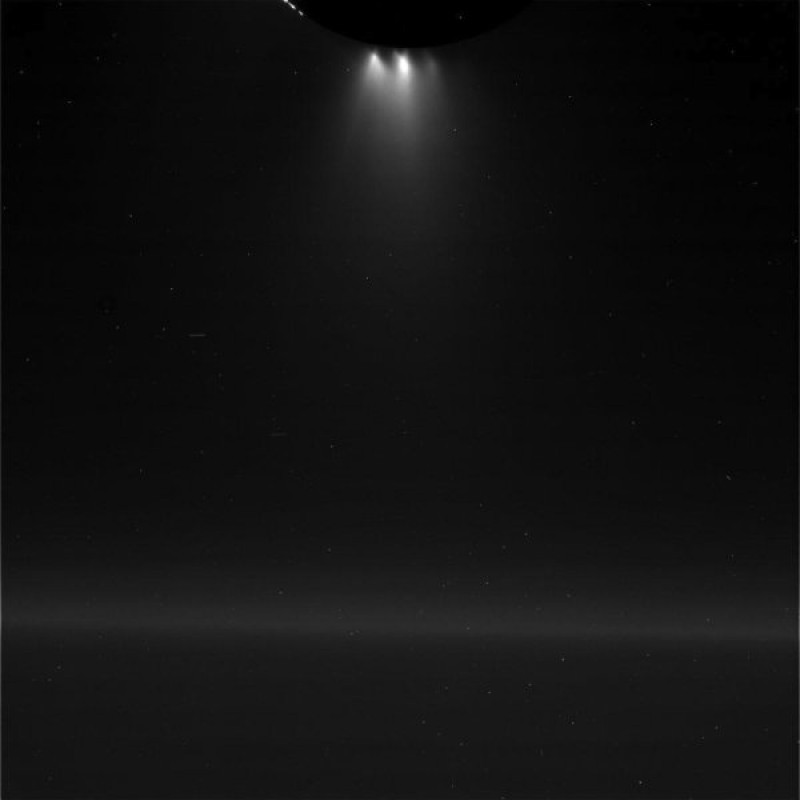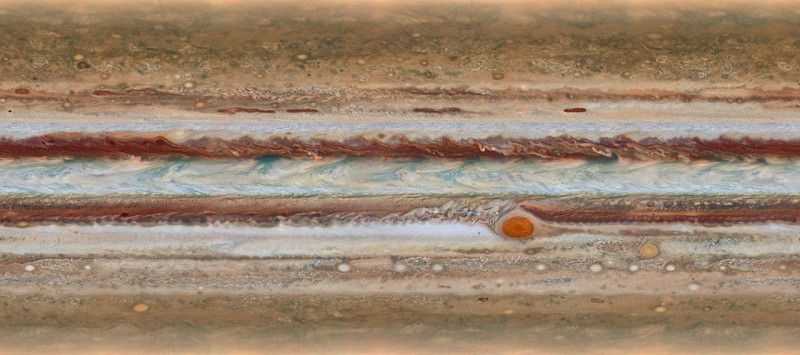Blog
Mystery of Disappearing Asteroids Solved
Friday, February 19th 2016 09:04 PM
Ever since it was realized that asteroid and comet impacts are a real and present danger to the survival of life on Earth, it was thought that most of those objects end their existence in a dramatic final plunge into the Sun. A new study published on Thursday in the journal Nature finds instead that most of those objects are destroyed in a drawn out, long hot fizzle, much farther from the Sun than previously thought. This surprising new discovery explains several puzzling observations that have been reported in recent years.
An international team composed of researchers from Finland, France, the United States and the Czech Republic originally set out to construct a state-of-the-art model of the Near-Earth Object (NEO) population that is needed for planning future asteroid surveys and spacecraft missions. The model describes the NEOs orbit distribution and estimates the number of NEOs of different sizes.
Artist’s impression. An asteroid's orbit is altered a...
Read More
Read More
Pan-STARRS chases source of LIGO gravity wave event
Friday, February 19th 2016 08:56 PM
Pan-STARRS chases source of LIGO gravity wave event
A significant event happened at the Laser Interferometer Gravitational-wave Observatory on September 15 — a ripple in spacetime had occurred. But where?
By University of Hawaii at Manoa's Institute for Astronomy, Honolulu | Published: Friday, February 12, 2016
The Pan-STARRS1 Telescope on Haleakala, Maui, at dawn
University of Hawaii
The email came in the night on September 15. A significant event had happened at the Laser Interferometer Gravitational-wave Observatory (LIGO) during their engineering run. A ripple in spacetime had occurred somewhere in the universe. But where? LIGO had not yet started their formal observing run, and with only two gravity wave detectors, one in Hanford, Washington, and one in Livingston, Louisiana, they could not pinpoint where in the sky, amongst billions and billions of galaxies, the source of this disturbance had occurred. The LIGO team’s first analysi...
Read More
Read More
Babylonian Astronomy Text Changes History
Saturday, January 30th 2016 12:56 AM
More than a thousand years before the first telescopes, Babylonian astronomers tracked the motion of planets across the night sky using simple arithmetic. But a newly translated text reveals that these ancient stargazers also used a far more advanced method, one that foreshadows the development of calculus over a thousand years later.
It’s a well-known fact that the Babylonians were skilled mathematical astronomers, who preserved their knowledge on hundreds of clay tablets. But when astroarchaeologist Matthieu Ossendrijver of Humboldt University in Berlin translated an unstudied text on Jupiter, he discovered something astonishing. To track the gas giant’s path across the sky, the Babylonians used a geometric technique—the so-called trapezoid procedure—that’s a cornerstone of modern calculus. Until now, this method was believed to have been developed in medieval Europe, some 1,400 years later.
“This shows just how...
Read More
Read More
New Evidence Suggests a Ninth Planet at Edge of Solar System
Friday, January 22nd 2016 11:53 PM
Astronomers at the California Institute of Technology announced Wednesday that they have found new evidence of a giant icy planet lurking in the darkness of our solar system far beyond the orbit of Pluto. They are calling it "Planet Nine."
Their paper, published in the Astronomical Journal, describes the planet as about five to 10 times as massive as the Earth. But the authors, astronomers Michael Brown and Konstantin Batygin, have not observed the planet directly.
Mike Brown stands for a portrait in front of an artist portrayal of Planet Nine. (Photo by Patrick T. Fallon for The Washington Post)
Instead, they have inferred its existence from the motion of recently discovered dwarf planets and other small objects in the outer solar system. Those smaller bodies have orbits that appear to be influenced by the gravity of a hidden planet – a "massive perturber." The astronomers suggest it might have been flung into deep space long ag...
Read More
Read More
3D Print-and-Bake Ceramic Resin Technology Heating Up
Sunday, January 10th 2016 12:43 AM
Ceramic parts are incredibly useful - they are strong, lightweight, and more heat- and wear-resistant than many metals, making them perfect for parts for airplanes and rockets. The space shuttle had herat resistant tiles for reentry, for example. Researchers at HRL Laboratories, LLC, have achieved a new milestone in 3D printing technology by demonstrating an approach to additively manufacture ceramics that overcomes the limits of traditional ceramic processing and enables high temperature, high strength ceramic components.
HRL’s Senior Chemical Engineer Zak Eckel and Senior Chemist Dr. Chaoyin Zhou invented a resin formulation that can be 3D printed into parts of virtually any shape and size. The printed resin can then be fired, converting it into a high strength, fully dense ceramic. The resulting material can withstand ultrahigh temperatures in excess of 1700°C and exhibits strength ten times higher than similar materials.
Ceramics are much more...
Read More
Read More
New Clues to Ceres' Bright Spots and Origins
Wednesday, December 16th 2015 08:05 PM
This representation of Ceres' Occator Crater in false colors shows differences in the surface composition. Image Credit: NASA/JPL-Caltech/UCLA/MPS/DLR/IDA
Ceres reveals some of its well-kept secrets in two new studies in the journal Nature, thanks to data from NASA's Dawn spacecraft. They include highly anticipated insights about mysterious bright features found all over the dwarf planet's surface.
In one study, scientists identify this bright material as a kind of salt. The second study suggests the detection of ammonia-rich clays, raising questions about how Ceres formed.
About the Bright Spots
Ceres has more than 130 bright areas, and most of them are associated with impact craters. Study authors, led by Andreas Nathues at Max Planck Institute for Solar System Research, Göttingen, Germany, write that the bright material is consistent with a type of magnesium sulfate called hexahydrite. A different type of magnesium sulfate is familiar on Earth as E...
Read More
Read More
JunoCam Goes to Jupiter!
Wednesday, December 9th 2015 01:21 AM
This trio of Junocam views of Earth was taken during Juno's close flyby on October 9, 2013. See below for the Full Description
When NASA's Juno mission arrives at Jupiter on July 4, 2016, new views of the giant planet's swirling clouds will be sent back to Earth, courtesy of its color camera, called JunoCam. But unlike previous space missions, professional scientists will not be the ones producing the processed views, or even choosing which images to capture. Instead, the public will act as a virtual imaging team, participating in key steps of the process, from identifying features of interest to sharing the finished images online.
"This is really the public's camera. We are hoping students and whole classrooms will get involved and join our team," said Scott Bolton, Juno principal investigator at the Southwest Research Institute in San Antonio.
The Juno team has kicked off the first stage of JunoCam activity with the launch of a new Web platfor...
Read More
Read More
Pluto may have ammonia-fueled ice volcanoes
Wednesday, November 11th 2015 01:05 AM
The informally named feature Wright Mons, located south of Sputnik Planum on Pluto, is an unusual feature that’s about 100 miles (160 kilometers) wide and 13,000 feet (4km) high. It displays a summit depression (visible in the center of the image) that's approximately 35 miles (56km) across, with a distinctive hummocky texture on its sides. The rim of the summit depression also shows concentric fracturing. New Horizons scientists believe that this mountain and another, Piccard Mons, could have been formed by the "cryovolcanic" eruption of ices from beneath Pluto's surface.
NASA/Johns Hopkins University Applied Physics Laboratory/Southwest Research Institute
From possible ice volcanoes to twirling moons, NASA’s New Horizons science team is discussing more than 50 exciting discoveries about Pluto at this week’s 47th Annual Meeting of the American Astronomical Society’s Division for Planetary Sciences in National Harbor, Maryland. &...
Read More
Read More
Saturn's geyser moon shines in close flyby views
Wednesday, November 4th 2015 12:39 AM
This unprocessed view of Saturn's moon Enceladus was acquired by NASA's Cassini spacecraft during a close flyby of the icy moon on Oct. 28, 2015.
Credit: NASA/JPL-Caltech/Space Science Institute
NASA's Cassini spacecraft has begun transmitting its latest images of Saturn's icy, geologically active moon Enceladus, acquired during the dramatic Oct. 28 flyby in which the probe passed about 30 miles (49 kilometers) above the moon's south polar region. The spacecraft will continue transmitting its data from the encounter for the next several days.
"Cassini's stunning images are providing us a quick look at Enceladus from this ultra-close flyby, but some of the most exciting science is yet to come," said Linda Spilker, the mission's project scientist at NASA's Jet Propulsion Laboratory in Pasadena, California.
Researchers will soon begin studying data from Cassini's gas analyzer and dust detector instruments, which directly sampled the moon's plume of gas...
Read More
Read More
Hubble captures changes in Jupiter's Great Red Spot
Friday, October 23rd 2015 12:53 AM
This new image from the largest planet in the Solar System, Jupiter, was made during the Outer Planet Atmospheres Legacy (OPAL) programme. The images from this programme make it possible to determine the speeds of Jupiter's winds, to identify different phenomena in its atmosphere and to track changes in its most famous features.
Credit: NASA, ESA, A. Simon (GSFC), M. Wong (UC Berkeley), and G. Orton (JPL-Caltech)
Scientists using the NASA/ESA Hubble Space Telescope have produced new maps of Jupiter that show the continuing changes in its famous Great Red Spot. The images also reveal a rare wave structure in the planet's atmosphere that has not been seen for decades. The new image is the first in a series of annual portraits of the Solar System's outer planets, which will give us new glimpses of these remote worlds, and help scientists to study how they change over time.
In this new image of Jupiter a broad range of features has been captured, including winds,...
Read More
Read More
